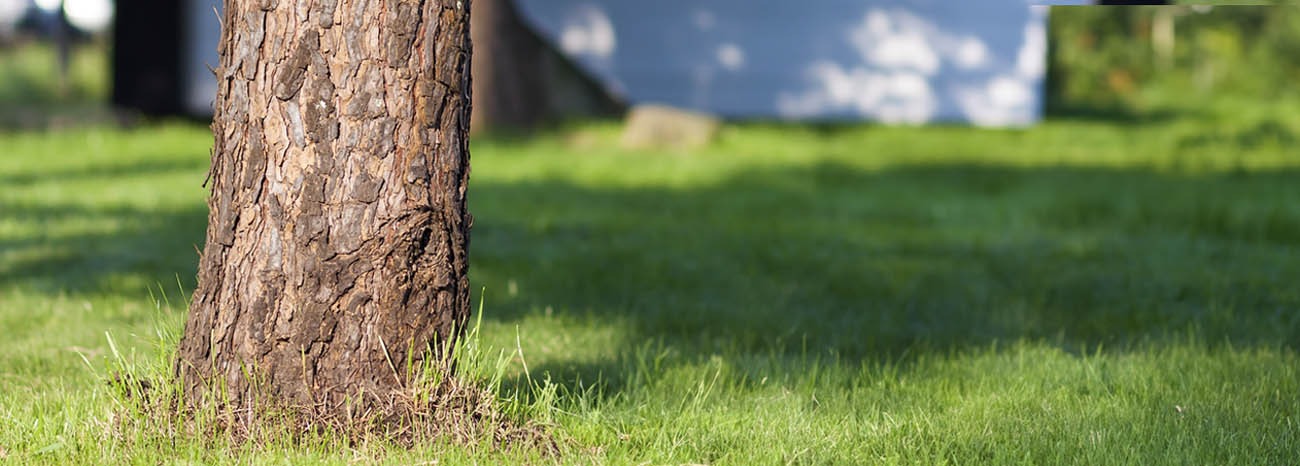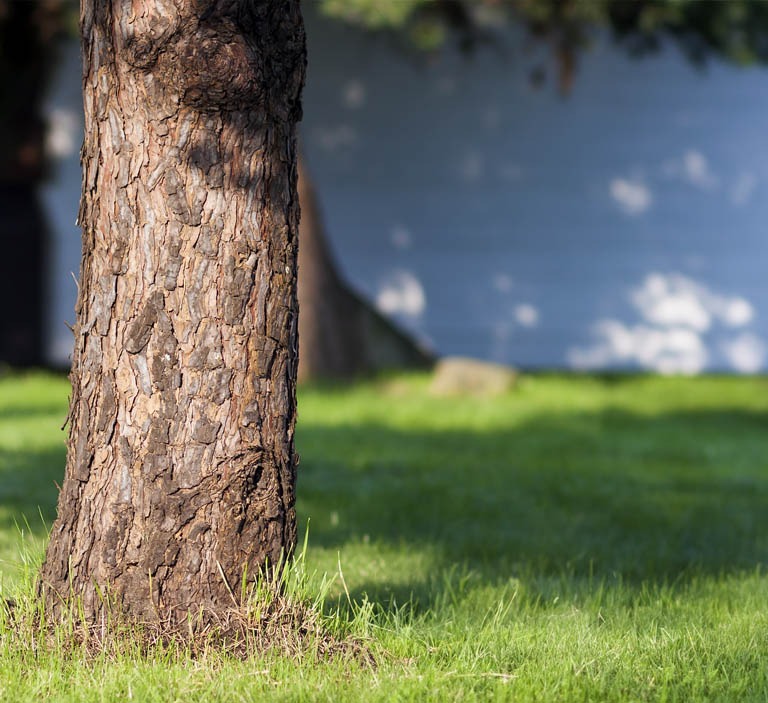Tree bark plays a crucial role in the overall health of a tree. As the first line of defense against pests, diseases, and environmental factors, the bark is essential to the tree’s circulatory system, transporting nutrients and water. When tree bark is damaged, it can jeopardize the tree’s vitality, making it susceptible to diseases, stunted growth, and even death. This homeowners guide on tree bark damage will help you understand the importance of tree bark, identify signs of damage, and take effective steps to repair and prevent further harm.
What is Tree Bark Damage?
Tree bark acts as a protective layer for the tree, safeguarding it from external threats and helping maintain the tree’s internal systems. Beneath the outer bark lies the phloem layer, which is responsible for transporting nutrients throughout the tree. When the bark is damaged, this vital circulatory system is compromised, disrupting the flow of nutrients and leading to a decline in tree health.
Common Causes of Bark Damage
Bark damage can occur due to various factors:
- Physical Injury: Often caused by lawn equipment, vehicles or animals, these injuries can leave the tree vulnerable to infection.
- Pests: Insects like borers and beetles can burrow into the bark, causing severe damage.
- Diseases: Fungal infections and diseases can weaken the bark, making it more susceptible to breaking or peeling.
- Environmental Factors: Extreme weather conditions like frost, sunscald, strong winds or drought can cause the bark to crack or peel away.
Signs of Bark Damage
Identifying bark damage early is critical to preventing more severe issues. Here are some signs to watch for:
Visible Damage
Look for cracks, missing sections, or peeling bark. These are clear indicators that the tree has been physically compromised.
Subtle Indicators
Wilting leaves, stunted growth, or discolored foliage can be signs of underlying bark damage, even if the bark itself appears intact.
Assessing the Severity of Damage
Assess the severity of the damage to the bark by checking its extent and whether it wraps around the trunk (girdling). Damage covering more than 25% of the tree’s circumference can be particularly harmful. It may require immediate action to save the tree.
How to Save a Tree with Damaged Bark
When a tree suffers from bark damage, timely intervention can make the difference between recovery and loss. Here’s how to proceed:
Immediate Actions
- Clean the Wound: Start by cleaning the damaged area. Remove any loose, jagged or peeling bark to create a smooth edge around the wound. This helps prevent further peeling and gives the tree a better chance to heal. Avoid over-trimming, as removing too much bark can do more harm than good.
- Apply a Tree Wound Dressing (Optional): While some experts debate the necessity of tree wound dressing, it can be beneficial in cases of severe damage. A non-toxic tree wound dressing can protect the exposed area from pests, diseases and environmental stress while the tree heals. In some cases, however, it may be better to leave the wound open to encourage natural healing. In each case it’s essential to assess the situation and choose the best approach.
Using Tree Wraps for Protection and Healing
Tree wraps are a valuable tool for protecting the damaged area from further injury and promoting faster healing. They can help reduce water loss, prevent sunscald, and protect against frost damage during vulnerable seasons.
Start wrapping at the base of the tree, working your way upwards. Overlap the wrap as you go, ensuring it’s snug but not too tight—tight wraps can hinder the tree’s ability to breathe and grow. Tree wraps should remain in place during winter but be removed in the spring to avoid moisture buildup, which can lead to fungal growth.
Regular maintenance is necessary to ensure the wrap continues to protect without causing new issues:
- Check for Problems: Periodically check under the wrap for signs of moisture, pests or fungal growth. Address any issues promptly.
- Adjust as Needed: As the tree grows, the wrap may need to be adjusted or replaced to avoid constriction.
Long-Term Monitoring and Care
Continual monitoring is essential for the tree’s recovery:
- Watch the Wound: Regularly inspect the wound and surrounding area for signs of infection, pests or other complications.
- New Growth: Look for new growth around the wound as a positive sign of healing. This indicates the tree is successfully repairing itself.
When to Call a Professional Arborist
If there is large-scale damage, such as extensive girdling or structural instability, it’s best to consult a certified arborist who can assess the situation and recommend treatments. Complex procedures like bridge grafting, where a section of bark is transplanted to help the tree heal, may be necessary to help restore nutrient flow in severely damaged trees.
Preventing Future Bark Damage
Prevention is always better than cure. Use tree wraps during winter to protect from sunscald and frost cracks. Install tree guards or barriers around the base to protect against lawn equipment and animals.
Regular inspections and proper care can help catch minor issues before they escalate into significant problems. Maintain overall tree health through routine maintenance that includes proper watering, pruning and pest control.
Signs a Tree Cannot Be Saved
Sometimes a tree may be too damaged to save, despite your best efforts. If the tree is extensively damaged and shows signs of decay or is structurally unstable, it should be removed by professionals.
Professional Tree Removal
If removal becomes necessary, hiring professionals is vital to ensure the process is done safely and efficiently. Certified arborists can assess the situation and remove the tree with minimal disruption to your property.
Safeguard Your Trees with Professional Care
Tree bark damage can be a serious threat to the health and stability of your trees. Still, with the right knowledge and prompt action many trees can recover. Following these steps and staying vigilant can protect your trees from further harm and ensure they remain healthy and strong.
If you’re unsure about the severity of the damage or need assistance, don’t hesitate to contact us today to schedule a consultation with our certified arborists. Call 215.799.2016 or visit our service department. Your trees are in good hands with our experienced team.


